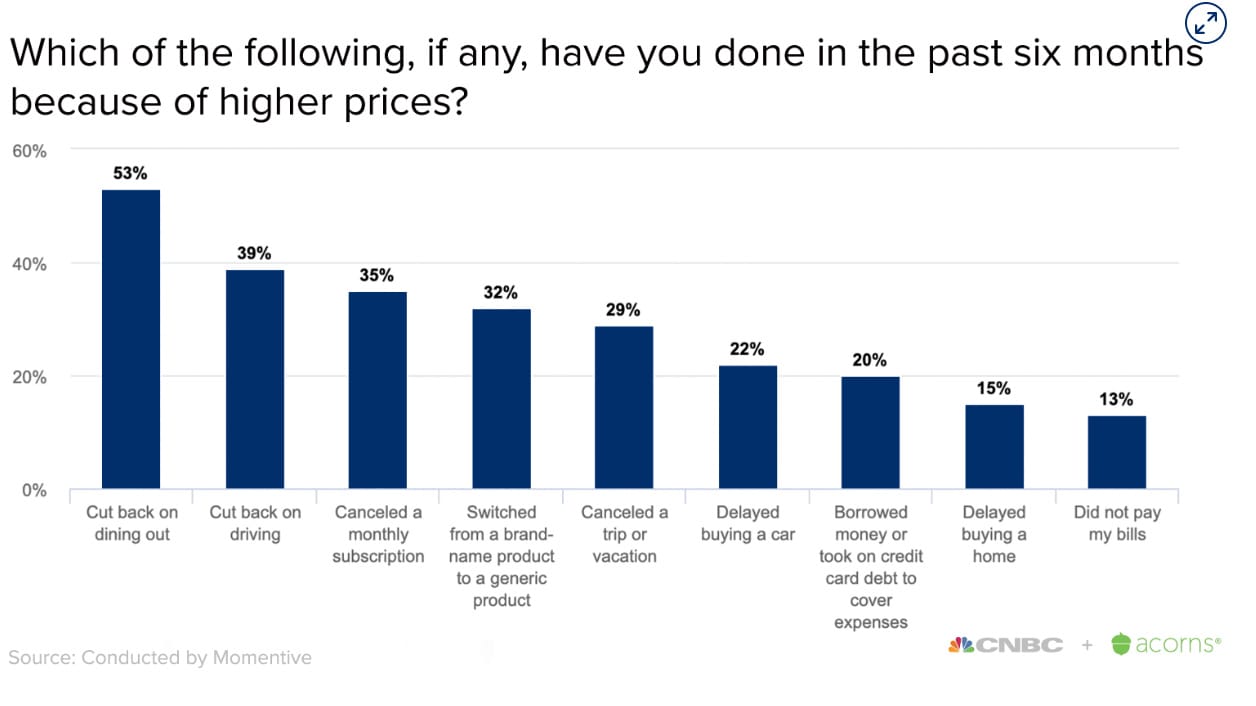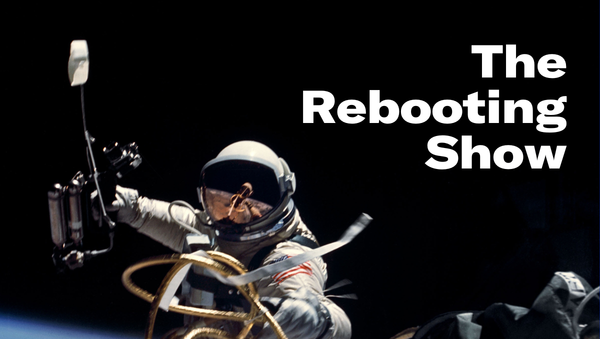Rethinking paywalls
Subscriptions aren't a business model

Publishers are the guardians of user data. By ensuring that it is protected, publishers and advertisers regain their central place in the process of discovering, planning for and activating audiences. Permutive ensures that every targeted ad impression, from open auctions to direct, is based on consented, non-PII, directly-sourced data.
Permutive’s guide to the future of digital advertising in a privacy-first world explores how advertisers and publishers can build and scale first-party data safely and effectively.

Rethinking paywalls
Most things treated as all-or-nothing propositions turn out to be more nuanced. The conventional thinking in digital publishing was for 20-plus years that information should be freely available, accumulating large audiences and monetized, for the most part, through advertising. Only a few esoteric outliers, often business publications, went against those orthodoxies and adopted subscription models.
The ads vs subscriptions decision was binary. For most publications, adopting a paywall meant trading off a large chunk of their ad business. The logic is basic: You make money off the number of times your ads are shown to people, so making it harder for people to read tends to mean fewer people will do so. There’s no greater friction than making people take out their credit cards.
The paywall orthodoxy changed for good in March 2011, when The New York Times adopted a metered paywall. It’s hard to imagine now, but the very survival of the Times was not a foregone conclusion at the time. In the aftermath of the Financial Crisis, the Times was in deep trouble, and the success of the metered approach was not a foregone conclusion, as the Times itself noted in its coverage.
No American news organization as large as The Times has tried to put its content behind a paywall after allowing unrestricted access. The move is being closely watched by anxious publishers, which have warily embraced the Web and struggled with how to turn online journalism into a profitable business.
Over a decade later, paying for digital content is a typical behavior. Netflix was still mailing out DVDs when the Times instituted its meter. It is now perfectly normal behavior to pay for digital content, and the process for doing so has become far less onerous. The Times has 10 million subscriptions, nearly every major news publisher has some form of subscription or membership. Substack has sold 1 million subscriptions to newsletters. A news publication like The Tangle has 5,500 paid subscribers and is on the road to building a sustainable media business.
These days, the idea of supporting a news publication through ads is what the business school crowd would call an “orthogonal strategy.”
Of course, the shift to subscription models was pushed along not just by consumer behavior but also by the reality of an advertising market dominated by Google, Facebook and increasingly other platforms with vast troves of valuable consumer data. The pivot to paid wasn’t much of a choice for many publishers.
In digital media, any approach that’s successful will be copied ad nauseum until it ceases to work. This is happening in the the news publishing business. Consider:
- CNN+ is a disaster. The new Discovery leadership team has done everything short of changing the locks to make clear it wants no part of this mess, even making clear that McKinsey came up with the initial projections the service would net 2 million subscribers in its first year and 15-18 million after four years. (Warner Bros. Discovery leadership is halting marketing of the service, which has attracted 150,000 signups in its first month.)
- Quartz is the rare publisher to change course on its paywall, abandoning its metered approach for a membership model built around a pair of specialized newsletters. Quartz claims 25,000 paid subscribers.
- The New York Times itself is increasingly focused on building non-news subscription products, building off the success it has had with cooking to expand further into games.
This isn’t coincidental. The sheer number of subscription programs from news publishers is overwhelming. Many focused on piling up big numbers of subscribers with sweetheart introductory offers that balloon to 90% or more increase at full rate. That comes as a sticker shock to many consumers. Inflation is raising costs across the board for people, denting not just their wallets but also their confidence. Consumer confidence is now at the lowest level it’s been in a decade. Almost a third of people expect their financial positions to worsen, the highest number since the 1940s. Global growth forecasts are being slashed. A recession in the next two years is a 35% possibility, according to Goldman Sachs.
Those sentiments are trickling down into spending decisions. While people continue to splash out on travel and restaurants after being cooped up, they’re scrutinizing other expenses, including spending on subscriptions. Overall, consumers spent nearly $500 more per year on subscriptions in 2021 compared to three years earlier. Now they’re reassessing. Even Netflix is losing subscribers and even talking of – horrors! – advertising. The pressures on subscriptions won’t go away anytime soon.

News publishers will need to come up with new models for direct reader revenue. The reality is only a very small percentage of a publication’s audience will pay. To date, news publishers have mostly mimicked e-commerce businesses with an approach that’s sought to get the broadest base of subscribers. That has many advantages but again runs up against the reality that few publications have a large enough loyal audience. For most, a more flexible approach will serve them better, including ditching the idea that what people crave is “unlimited access” to ever more news. Better to instead focus on finding your most passionate fans and offering them added value, as Quartz is doing, with additional tailored products.
This “freemium” model often works better, and it aligns incentives better between the publisher and the audience. The trick with such models is coming up with a clear delineation of the type of content that is behind a paywall. That class tends to be content people need to do their job or accomplish some kind of task. For a business publication, that can be deep information about a specific sector or competitive intelligence. For a local news publisher, that can be real estate information. In general, breaking news doesn’t meet the bar because it isn’t differentiated enough and there is a surfeit of it. News has value, but it’s more in driving frequency and, ultimately, habit.
The best way to make money in publishing remains many ways. The set-it-and-forget-it approach doesn’t work. The ad market has continued to perform well for publishers, even with hare-brained decisions from advertisers to block ads on news from the Ukraine war. The uncertain path for digital ad targeting has swung the pendulum in favor of contextual placements. That gives publishers an opening to grow their ad businesses.
Upstart news publications are putting direct revenue at the heart of their models but not as the only driver of subscriptions. Policy-focused news publishers like Axios and Punchbowl showcase how ads and subs are not in competition; in fact, a subscription base can make ad products even stronger. It’s no surprise that Puck has an ad business that’s far larger than its subscriptions at the moment. Investors want to hear about subscription models, but ads will continue to be important parts of sustainable models.

Recommended
Nobody can agree on the cure, but we’re near consensus that our media information ecosystem is profoundly broken. We’re less informed, angrier and less tolerant of those who don’t tick every one of our own ideological boxes. In the process of doing so, we’ve all become a lot more stupid.
This could be the year of the micro-media company. The Ankler continues to expand from Richard Rushfield’s Substack into a full publisher. After adding Janice Min as CEO three months ago, the Hollywood-focused publisher has brought on its first CRO, Bellinda Alvarez, who was formerly head of entertainment for the West Coast at Entertainment Weekly and People.
Seeing where top media execs land is a good way to understand which way the winds are blowing. Former Bleacher Report CEO and longtime Condé Nast executive Howard Mittman has landed at a gambling company, 888 Holdings. Media will continue to be a hard business, but also a great customer acquisition tool. Howard was a guest on The Rebooting Show in February.
Microsoft has been the sleeping giant of digital advertising for two decades. Maybe the time is finally right as gaming and connected TV blur, as Mike Shields writes.
Coming up with sustainable business models for local news has moved out of the experimentation phase and into execution. Ken Doctor, who is leading Lookout Santa Cruz, has an update on progress so far. One thing that stood out: Lookout’s 13-person staff has 10 in editorial.

Thanks for reading. Please send me a note with your thoughts: bmorrissey@gmail.com. If you’re interested in sponsoring The Rebooting, check out the sales kit.




